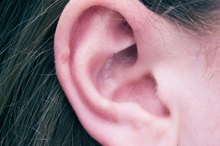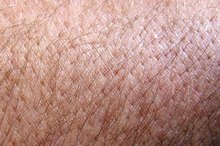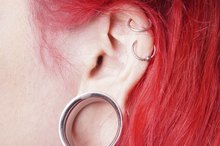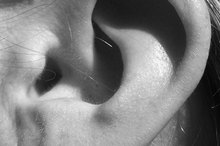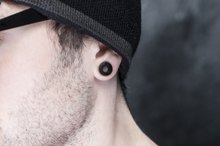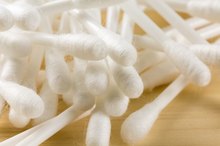How to Tell If There Is a Spider in My Ear?
Spiders, with their eight eyes and eight legs, frighten many people because of how inhuman they are. Spiders come in a variety of sizes, live nearly anywhere they can find food and often wander into human dwellings where they are unwelcome. A spider in your ear would be even more unwelcome 2. Before you panic, check whether or not there really is a spider in your ear 2. If there is a spider, a doctor can easily remove it for you.
If you are experiencing serious medical symptoms, seek emergency treatment immediately.
Listen carefully. If there is a spider in your ear, you may hear strange sounds because of how close it is to your ear drum 2. You may also experience pain or discomfort in the event of a spider taking up residence inside your ear canal 2.
How to Rid Smells in My Ears
Learn More
Turn your head sideways to look at your ear in a mirror, and see if there is a spider immediately obvious 2.
Ask a friend to look in your ear, possibly with a magnifying glass and small flashlight to see deeper into the ear canal.
How to Tell If a Human Has Ear Mites
Learn More
Visit a doctor, who will be able to perform a more thorough inspection of your ear. The doctor will also be able to flush out your ear, or remove a spider with a tweezers or forceps.
Warnings
Don't attempt to fish the spiders out with a cotton swab, as you may end up smashing them instead. Flushing them out with water if your best course of action. Do not attempt to insert any implement, such as a tweezers, into your ear yourself.
Related Articles
References
- MSNBC: Weird News - Rice Krispies? Actually, Spiders in Boy's Ear
- Sky News: Spider Lives In Woman's Ear
- Gaver-wainwright MM, Zack RS, Foradori MJ, Lavine LC. Misdiagnosis of spider bites: Bacterial associates, mechanical pathogen transfer, and hemolytic potential of venom from the hobo spider, Tegenaria agrestis (Araneae: Agelenidae). J Med Entomol. 2011;48(2):382-8. doi:10.1603/ME09224
- MedlinePlus. Shingles.
- Cronan KM. First aid: Spider bites. KidsHealth from Nemours. Updated July, 2018.
- Jenkins TC, Knepper BC, Jason Moore S, Saveli CC, Pawlowski SW, Perlman DM, McCollister BD, Burman WJ, Diabetes mellitus and skin infections. J. Hosp. Med 2014;12;788-794. doi:10.1002/jhm.2267
- Chauhan H, Patil S, Hajare A, Krishnaprasad K, Bhargava A. Necrotizing fasciitis of hand by nethicillin resistant Staphylococcus aureus (MRSA) - a sinister. J Clin Diagn Res. 2015;9(6):DD01–DD2. doi:10.7860/JCDR/2015/12381.6014
Warnings
- Don't attempt to fish the spiders out with a cotton swab, as you may end up smashing them instead. Flushing them out with water if your best course of action.
- Do not attempt to insert any implement, such as a tweezers, into your ear yourself.
Writer Bio
Chelsea Anderson is a professional writer who has attended university at the Delaware College of Art and Design and the School of the Art Institute of Chicago. She has self-published a comic and a 'zine, both of which are included in the Joan Flasch Artist's Book Collection.
